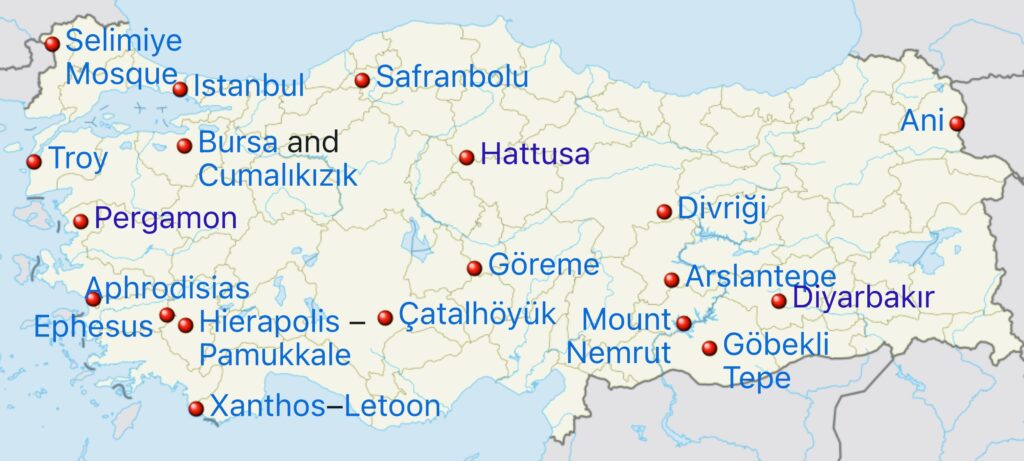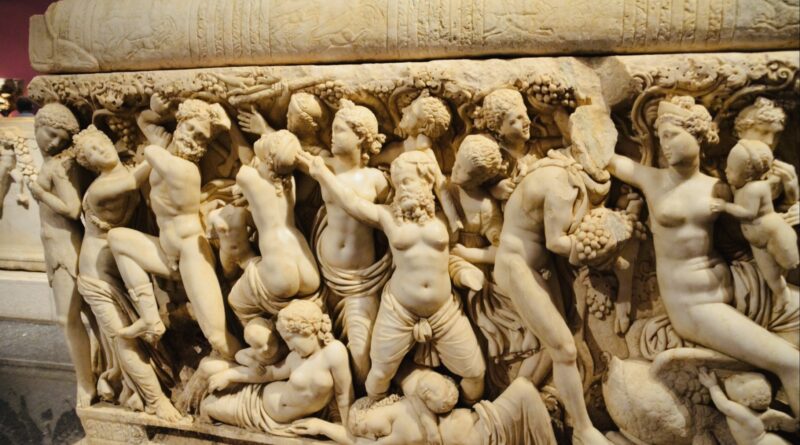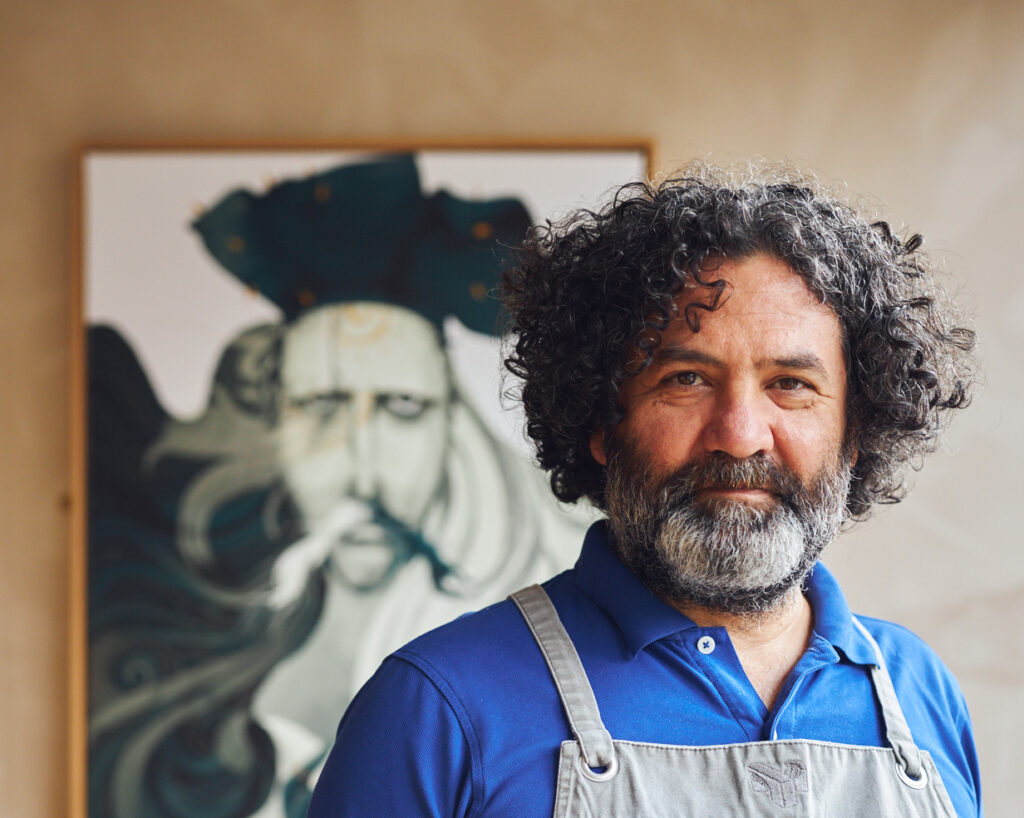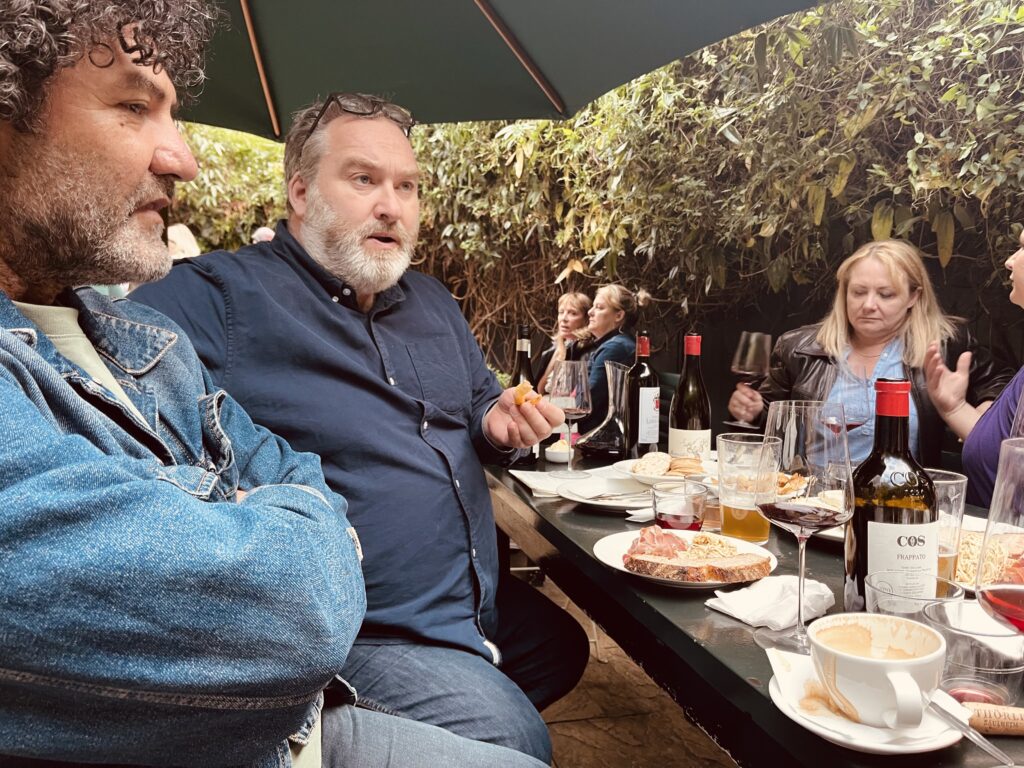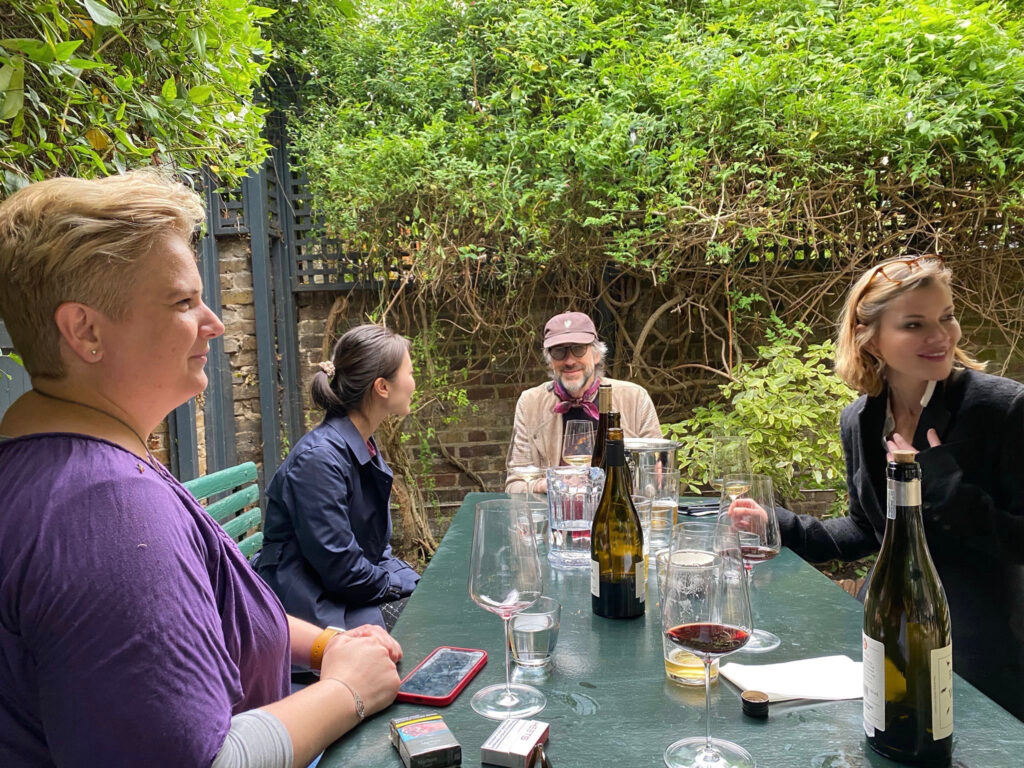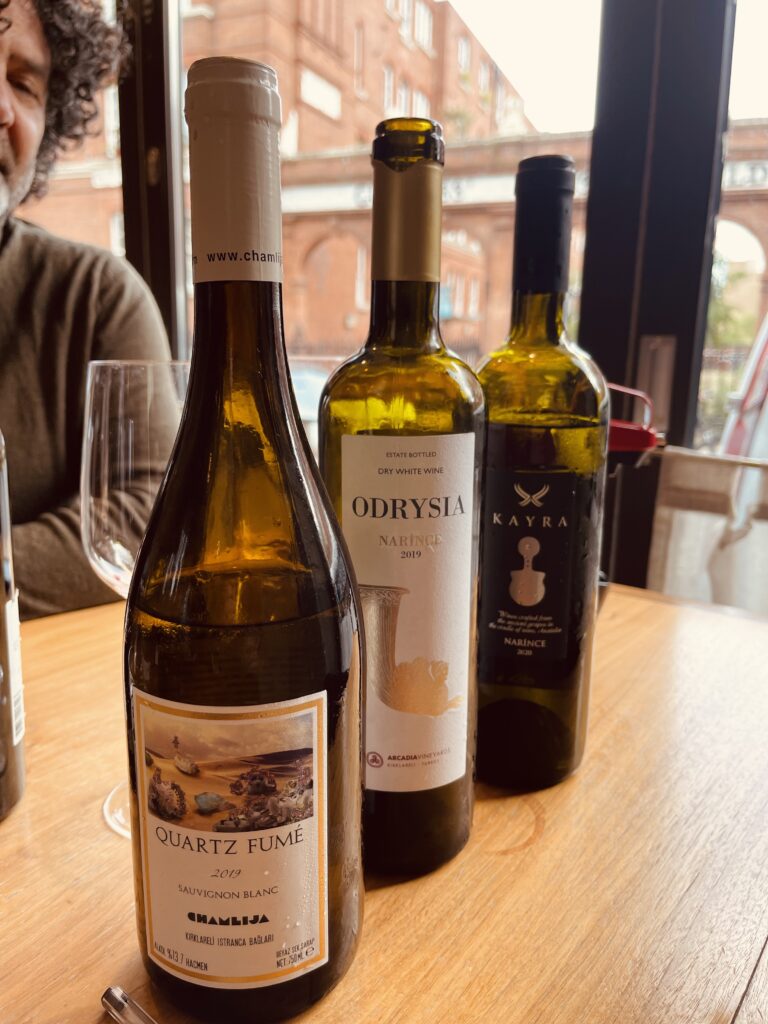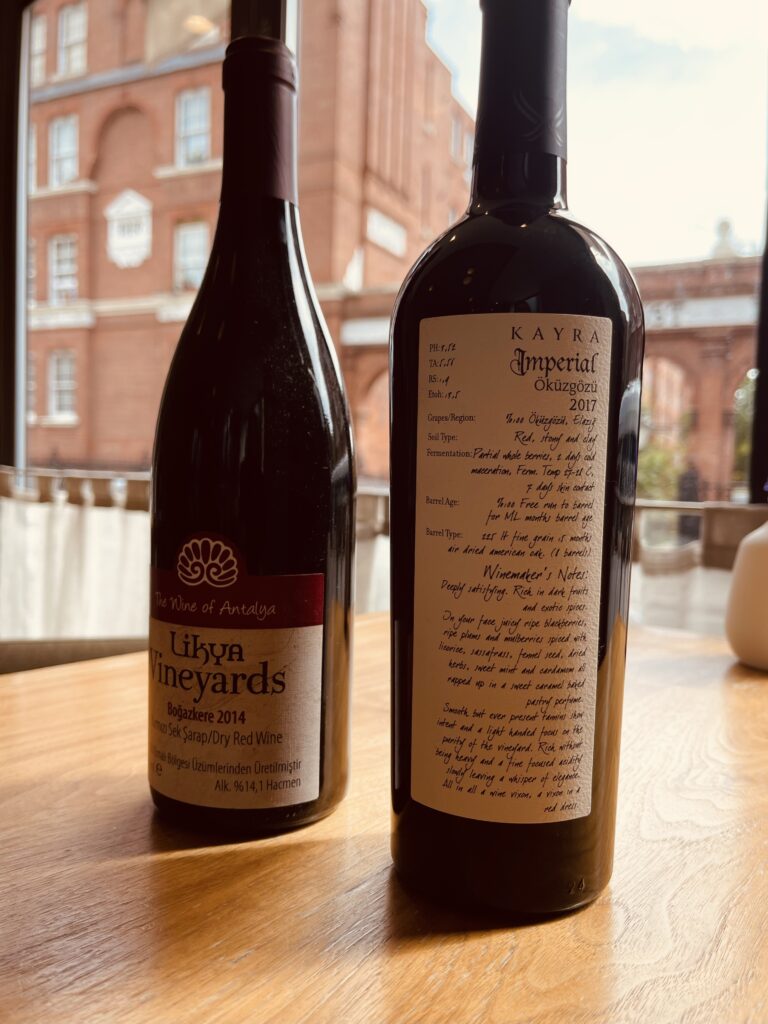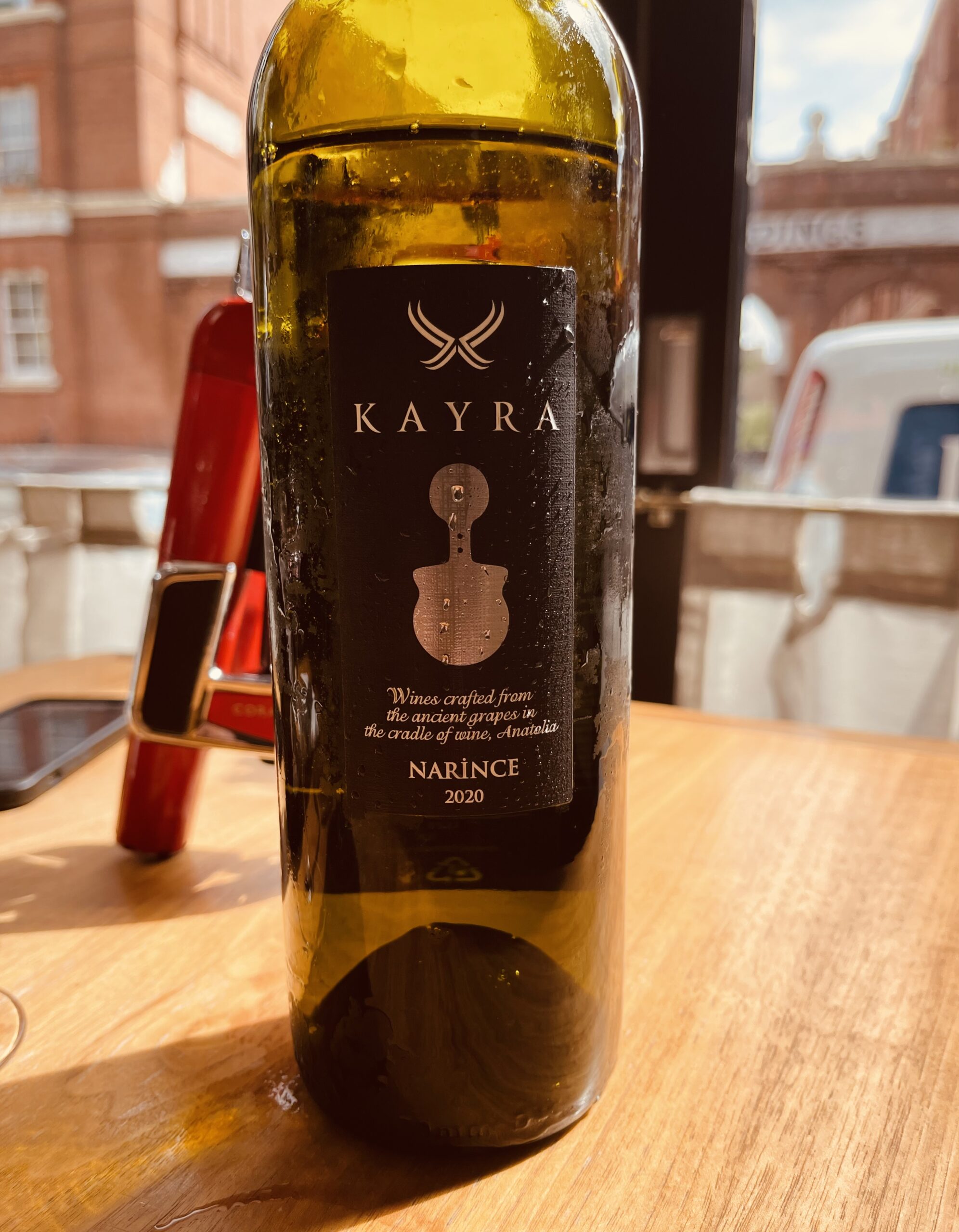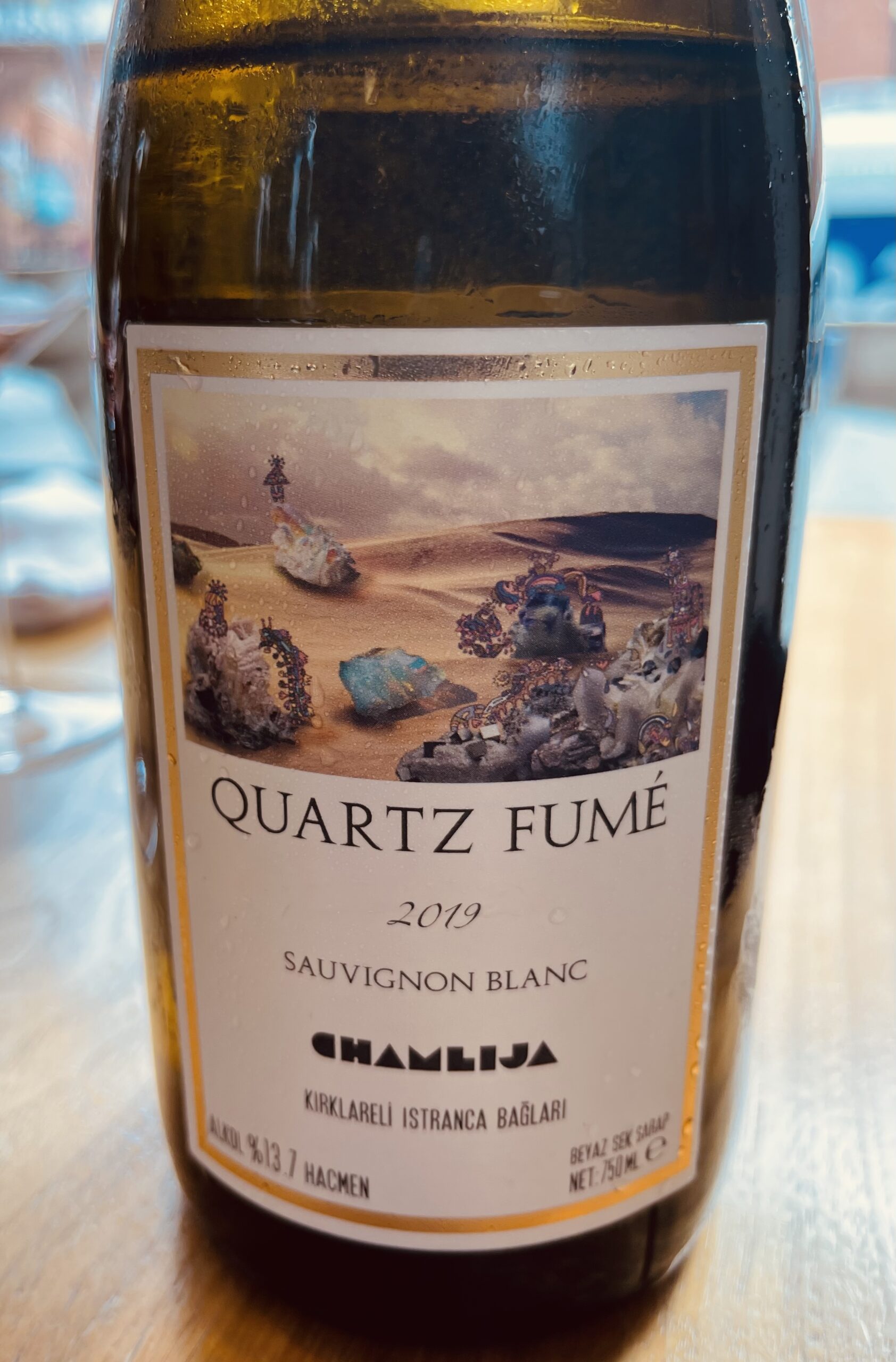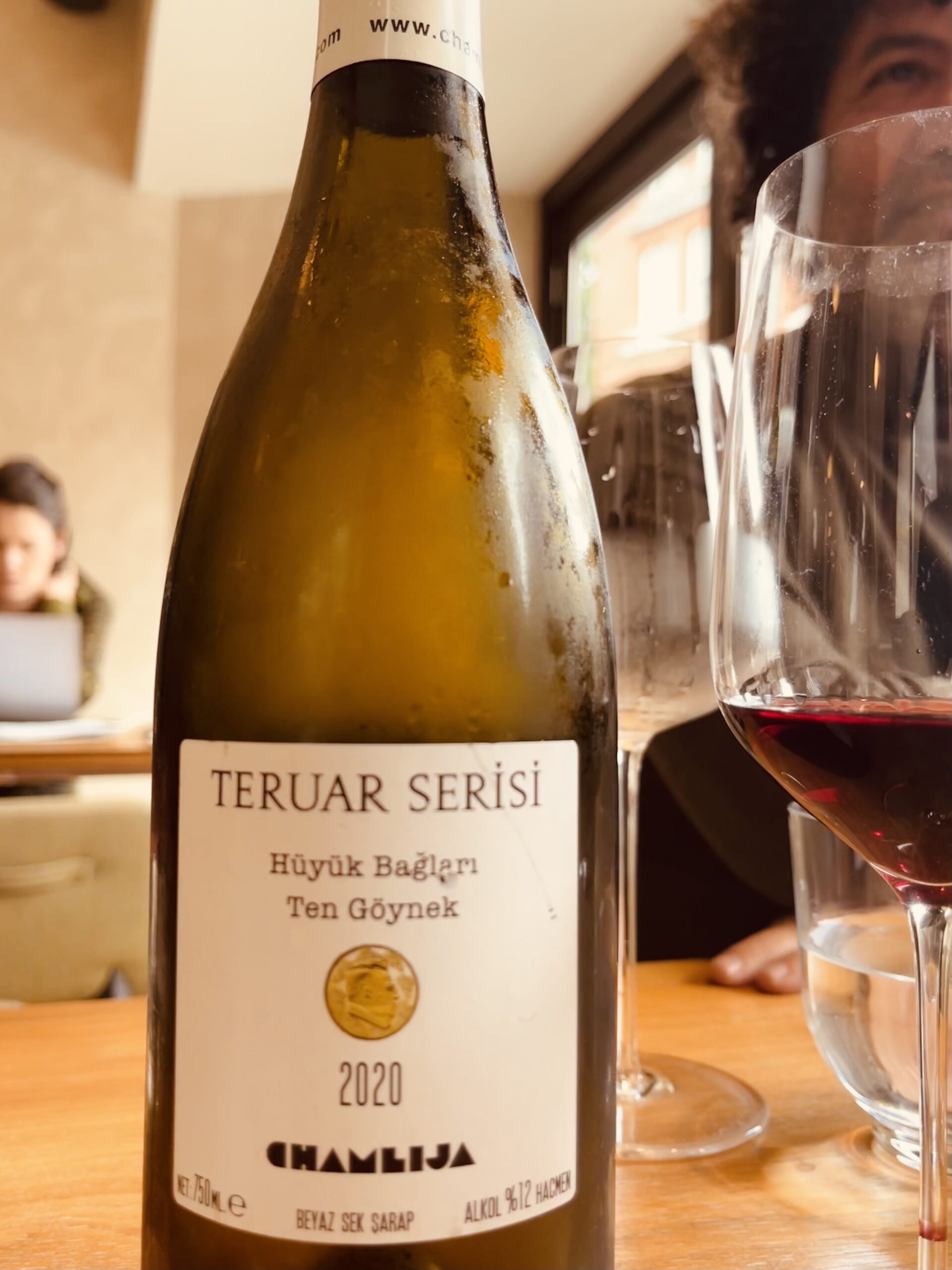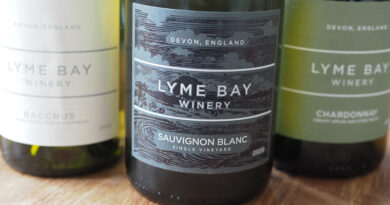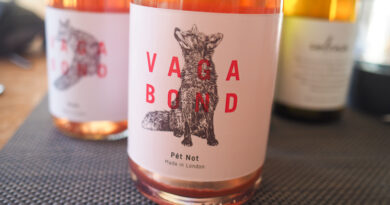Exploring Turkey’s wines with Isa Bal MS
Acclaimed Master Sommelier Isa Bal to turn Producer
Michelin starred Trivet already has the largest selection of fine Turkish wine available in the UK. Now joint owner Isa wants to add a few of his own to the list…
Lisse Garnett met with him to taste Turkey, talk ancient Thracian wine cults, epiphany and raki…she found the last two mutually exclusive..
Jamie Goode’s and Lisse’s tasting notes follow Isa’s in-depth musings on indigenous Turkish varieties..
South-eastern Anatolia in Turkey may well be where it all began. This spot in the Taurus Mountains near the source of the Euphrates and Tigris Rivers offers DNA evidence for the genesis of cultivated vines. It is here that local wild vines and human-selected varieties are most genetically similar. It is also here that many ancient tales of wine making co-exist: evidence of ancient viticulture is scant but credible.
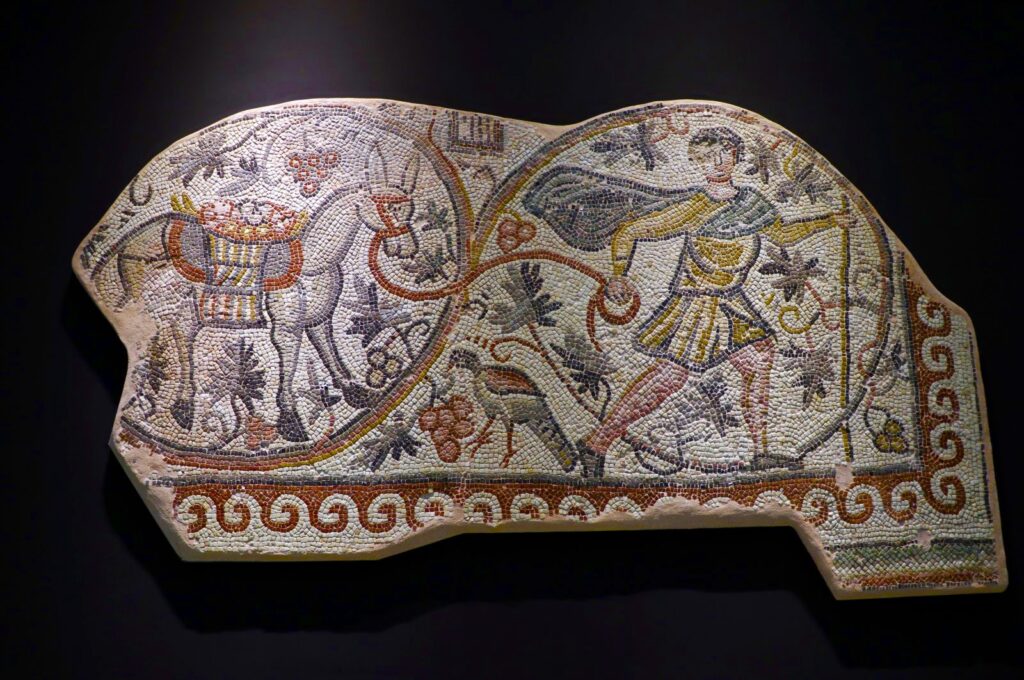
Mount Ararat in Anatolia is cited in biblical text as the resting place of Noah’s Ark, the place he cultivated vines. Constantinople – today’s Istanbul and yesterdays’ Byzantium – was declared capital of the Roman Empire in in 320 by the Emperor Constantine. The Romans loved to sup and the city was a hot bed of wine trading – leading to a continuous expansion of vineyards across the empire.
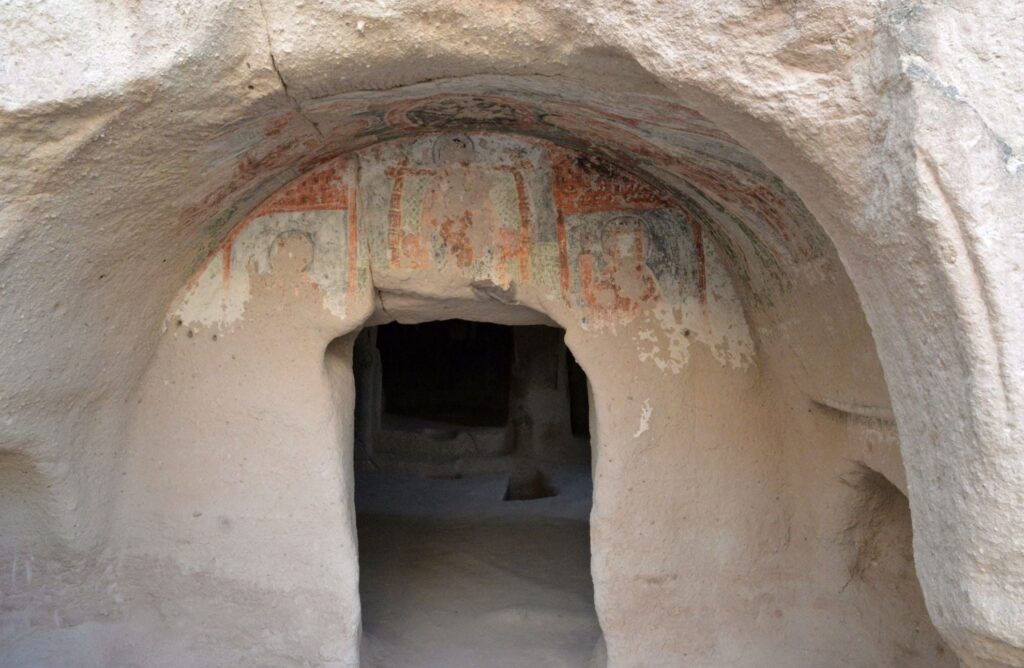
Images reproduced by kind permission of http://turkisharchaeonews.net/ 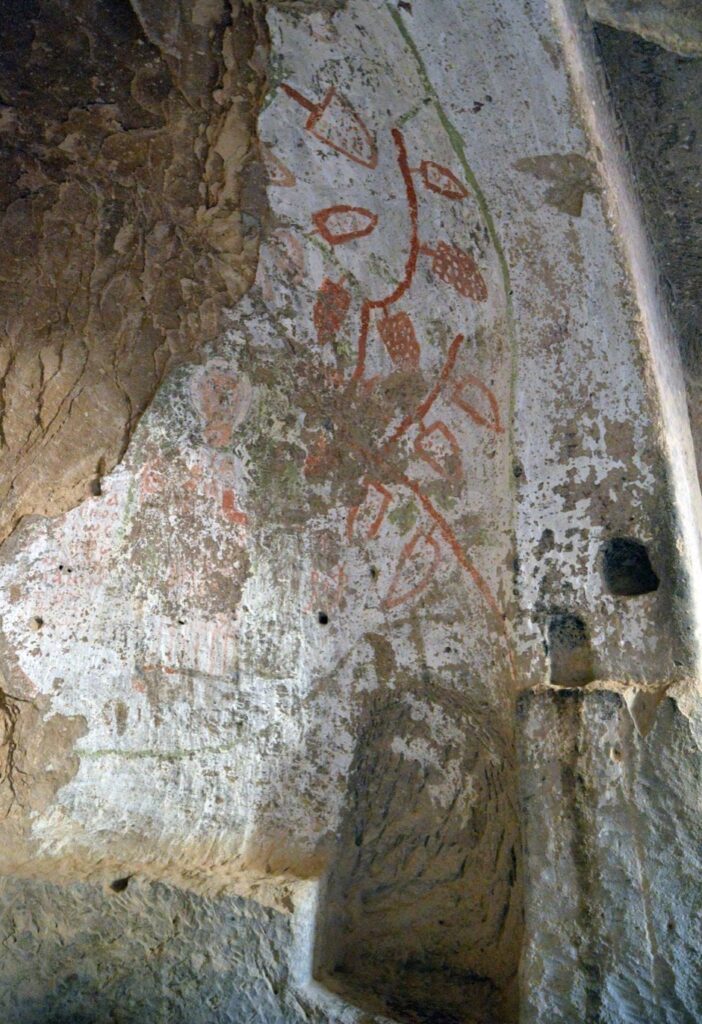
The Church of Grapes (Üzümlü Kilise) The name of the church is derived from the fresco depicting bunches of grapes.
Prior to that, Turkey’s successive inhabitants, the Thracians, Assyrians, Lydians and Hittites had all been partial to wine. The Hittites (1650-1200BC) governed viticulture with strict sophisticated laws and divided their fields on the basis of terroir. The Thracians claimed Dionysus the God of Wine as their own, later the Romans christened him Bacchus. Thracians are glimpsed in history as accomplished farmers and warriors who revered wine as sacred and studied its aromas to aid communion with God. Western Anatolia is home to the largest ruined Dionysian temple in the world. Dionysus advocated liberal freedom, divine understanding and epiphany through consumption.
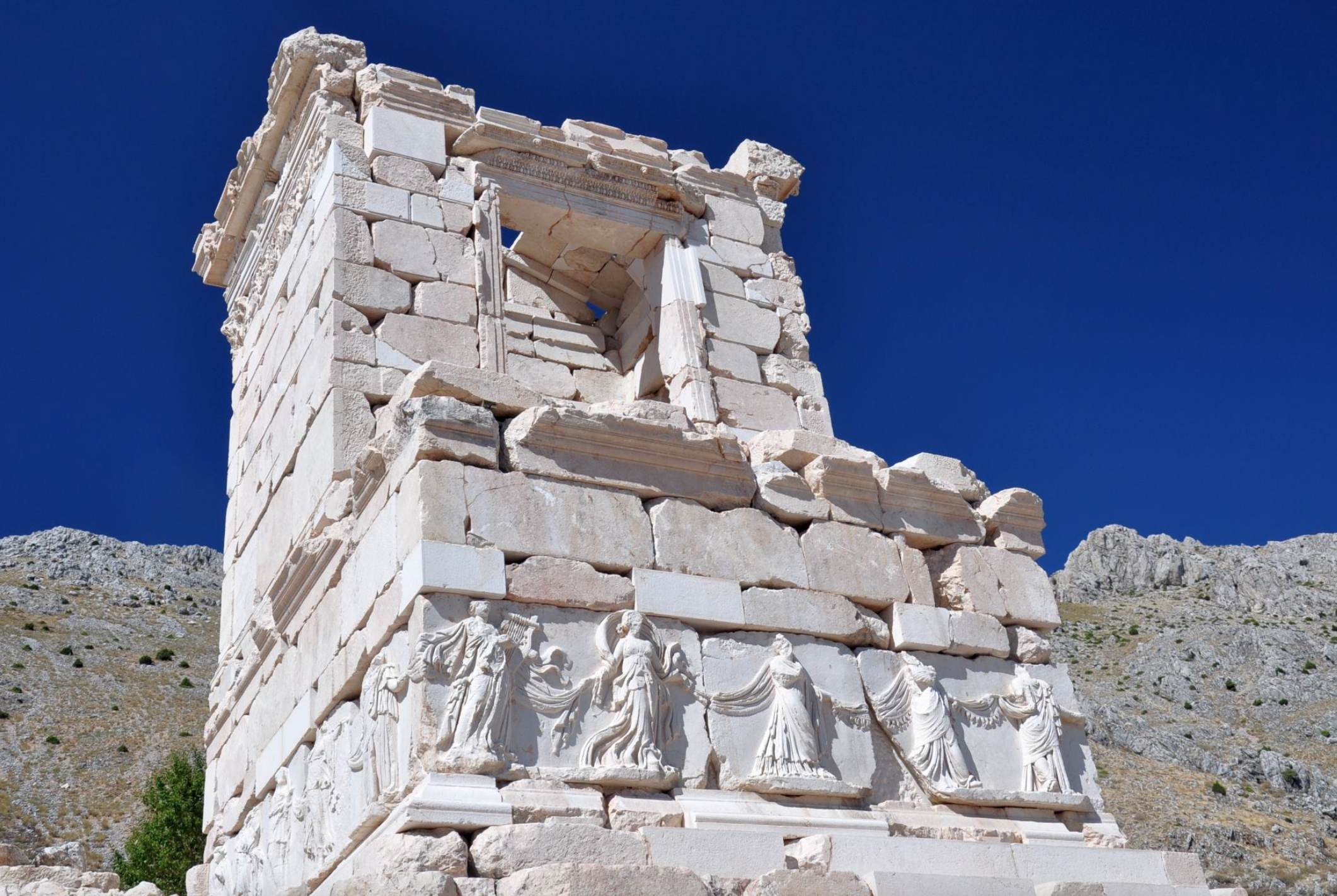
Sagalassos – Northwest Heroön
Thirteen dancing girls depicted almost life-size and in relief. They carry symbols related to worship of the god Dionysos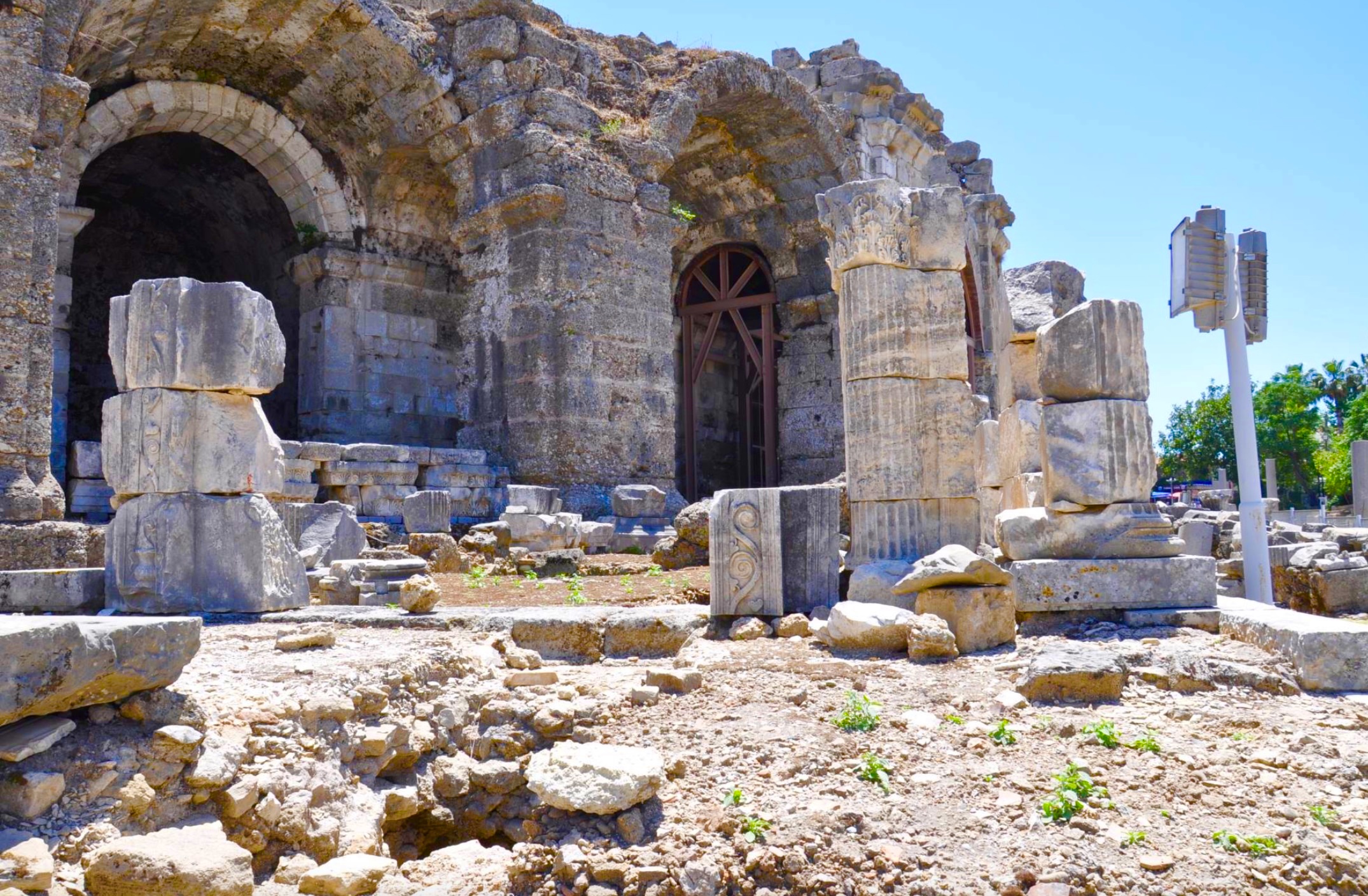
Temple of Dionysus at Side
Images reproduced by kind permission of http://turkisharchaeonews.net/
Turkey has the fifth largest vineyard area in the world but hardly any of the grapes are being grown to make wine. Raki is the local alcohol of choice, made from grapes and aniseed.
Isa talks Turkey..
Constantinople was the the richest city in Europe. In the eleventh century the Moslem Turks settled in Anatolia, and since then alcohol consumption has waxed and waned. Today successive Turkish governments have banned alcohol advertising, alcohol itself, heavily taxed booze and even barred tasting but its unclear how seriously any of these rules are taken – Isa doesn’t seem worried.
Isa Bal and his business partner Jonny Lake founded Trivet, Bermondsey, in 2018. He was named Best Sommelier in Europe in 2008 and this year he won the Michelin Guide Sommelier Award. He dislikes being photographed and is very modest.
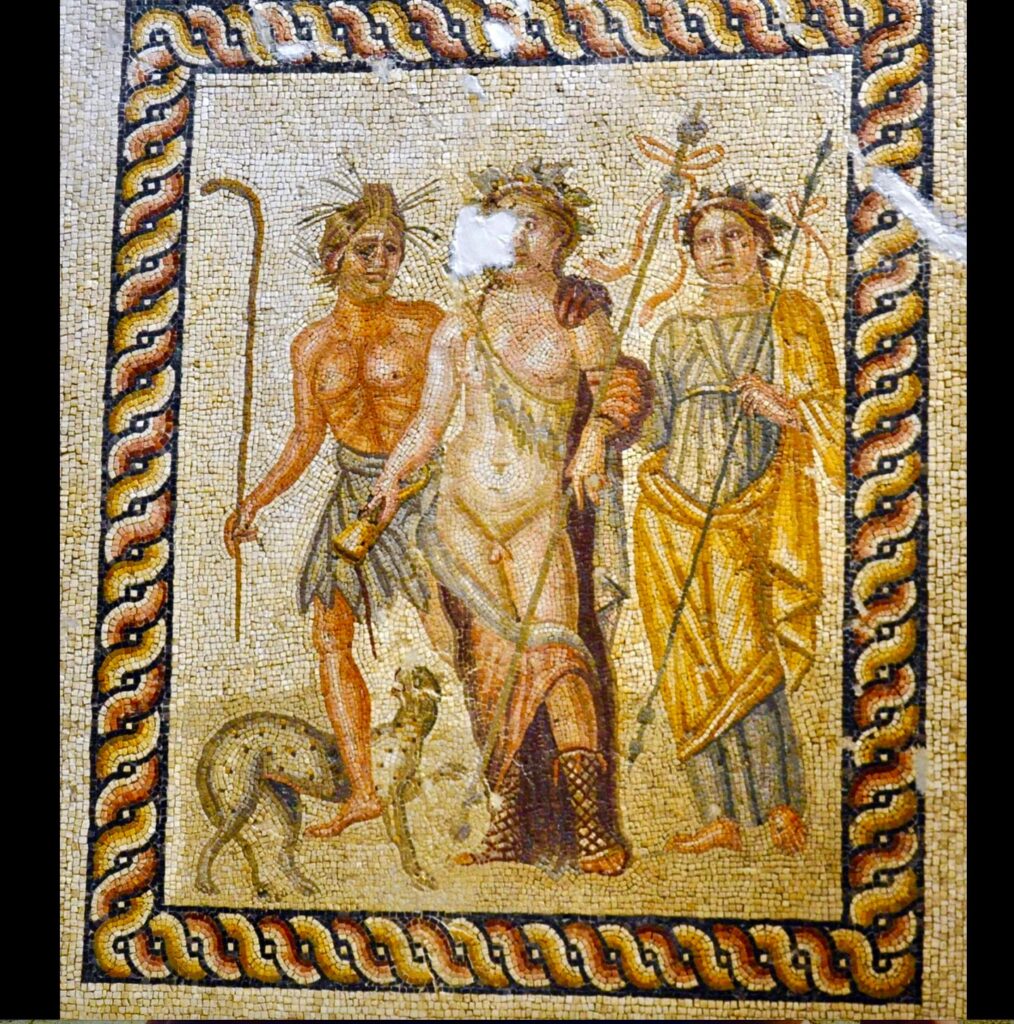
LG/How is wine regulated in Turkey?
Isa/Wine is strictly regulated, one of the most regulated wine markets in terms of limitations by The Food Codex, something similar to EU regulation. It has its limitations but must include pertinent information on the label and restricts chemical additions. They don’t so much adhere to classic appellations but may end up heading that way.
LG/I’ve never knowingly tried Turkish wine.
Isa/ I think we’ve probably got the largest selection of Turkish wines in this country that’s for sure. There are a few distributors here but they don’t always have the type of wines we are looking for and that’s why I am going through the process of getting our importing license in place so I can bring things in directly myself.
LG/When did your obsession with wine begin?
Isa/I was born in Turkey. All of my education up until university was there. I moved to London after university. I come from a working-class family and in my family, we didn’t drink wine. I first drank wine when I was about twenty-one. We drank beer or raki mainly. It is probably the defining drink in Turkey, especially now that it’s gotten so expensive there, most people prefer to drink it at home. Going out is expensive in Turkey and the economy hasn’t been doing well for various different reasons so instead of going to restaurants people are more likely to meet friends at home and drink.
LG/I’ve never tried raki.
Isa/I believe raki is one of the best conversation drinks ever, it’s about fifty percent alcohol usually, it’s almost similar to getting high. You just need to drink it with the right person. Drinking raki with the wrong person can be an extremely frustrating experience. You don’t want to overdo it because being drunk with it is an experience you will never forget
LG/Is there a culture of women drinking in Turkey?
Isa/I think women do drink in Turkey and I do like the fact that they do because let’s face it when men drink alone, they can be a bit stupid and when there are women present then I think it’s better. The culture is very different, here the drunkenness is tolerated and accepted whereas in Turkey if you get drunk as we do here, next time you want to go out your friends will probably find an excuse not to go out with you. I’m not saying that’s the right way to do it it’s just a different approach. Public drunkenness is not always appreciated.
LG/Does Turkey have a café society?
Isa/It’s hard to generalize because it’s a big country, if you are on the coast then yes there is that tradition, on the Mediterranean, the Aegean and parts of Istanbul. If you go inland towards the cities in central Turkey or Eastern Turkey, it’s like going to another country.
There are parts of Turkey I’ve never seen, I’ll probably never see. I think it would be a mistake to generalise especially when it comes to eating and drinking, these vary hugely. If you are in the Aegean the food is usually plant based, lots of vegetarian dishes made with olive oil and things like that so quite light and then of course there is fish in Southern Turkey from Anatolia to Bodrum. Generally, the food can be a little bland. Central Turkey gets a little more exciting, more meat, protein. In the southeast we are talking about more spicy and red meat culture, less emphasis on salads and things purely because the climate lends itself to that cuisine.
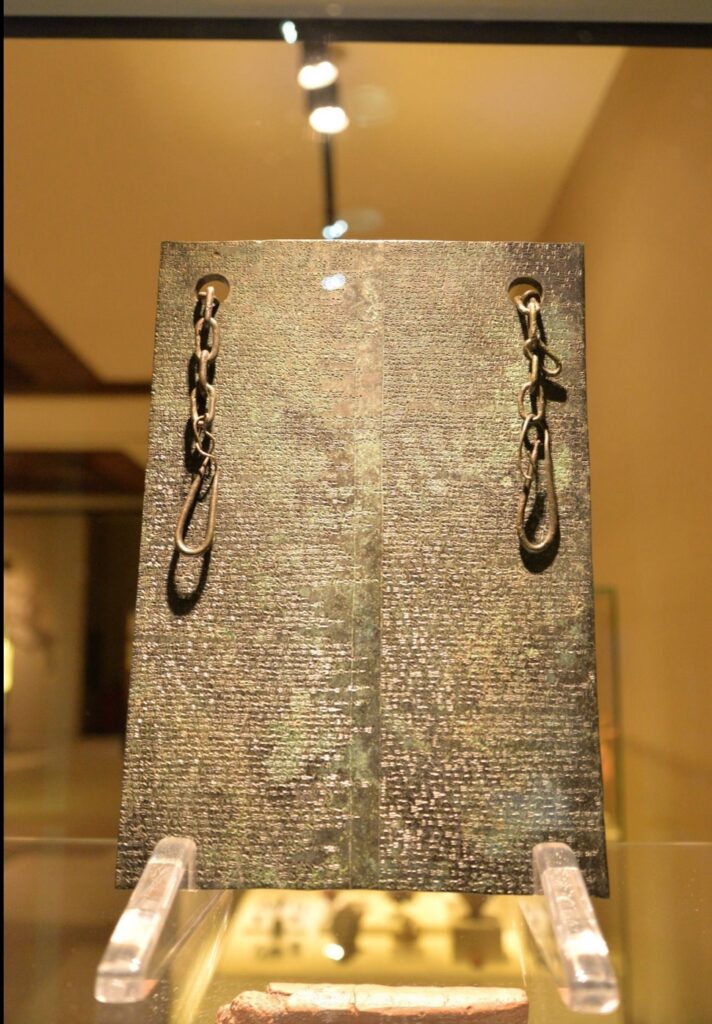
LG/Are the numerous successive occupiers evident in the food of Turkey?
Isa/One hundred percent, it’s not only the food, if you look at physical appearance of the people you can see it too. You get Turks who are ginger like some of my family, you get Turks who are blonde with blue eyes, and you get others who look Mediterranean, Asian or Mongolian. If you look at the cultural history, it’s incredibly varied, the Hittites were there, the Sumerians, Akkadians were there. The Thracians lived on the Adriatic and around the black sea, they may have been the first to worship Dionysis and study wine aromas.
I grew up surrounded by this history in Anatolia. The Hittites were further north and Pontics, they were Greek in origin and settled around the Black Sea before Alexander the Great’s invasion. The Hittites are bronze age and they had an indo European cuneiform language.. Wine was Wiyana in Hittite language, the route of vinum in latin and vin in French, Anatolia was Wiyanawanda, the land of grapevines. They had a very distinct appreciation of wine, vintages and vineyards.
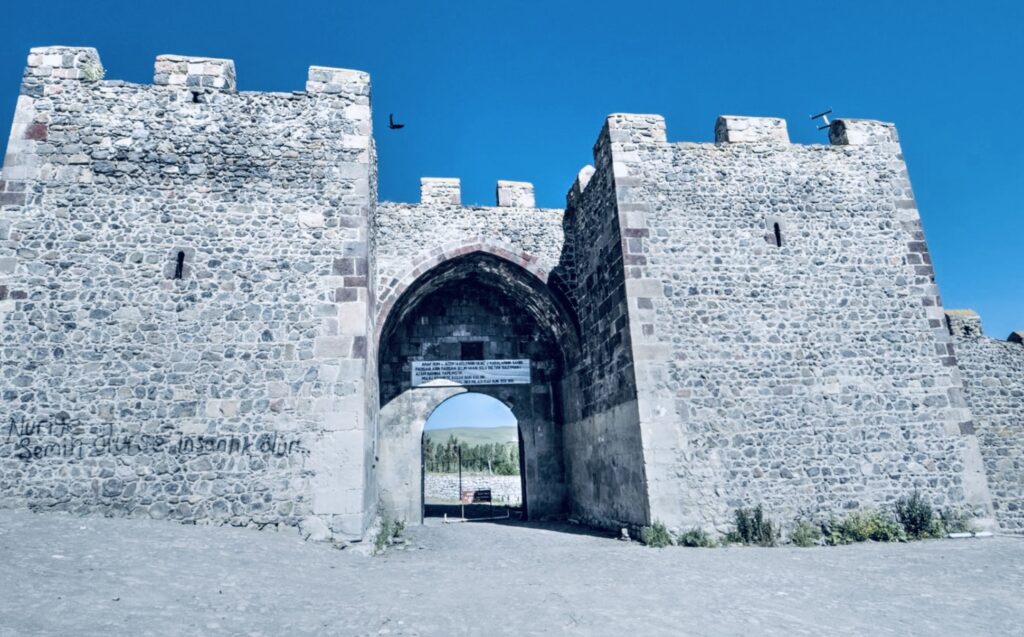
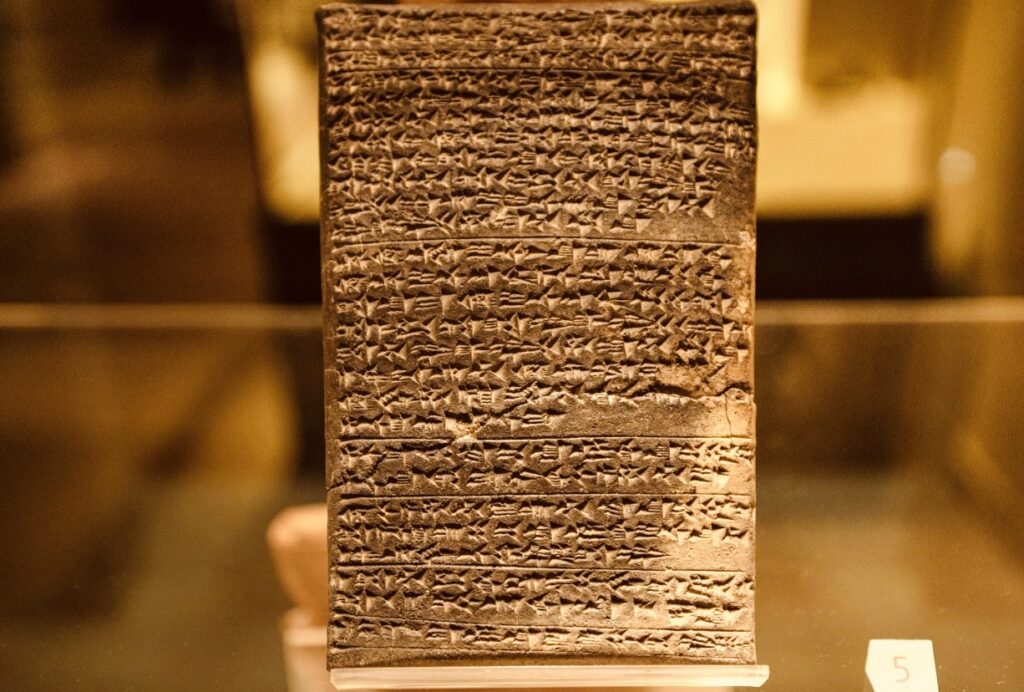
A letter written in Akkadian by Naptera, the wife of Ramses II, the king of Egypt, to Puduhepa, the wife of Hattusili III, the King of Hittites, between the years of 1275-1250 BCE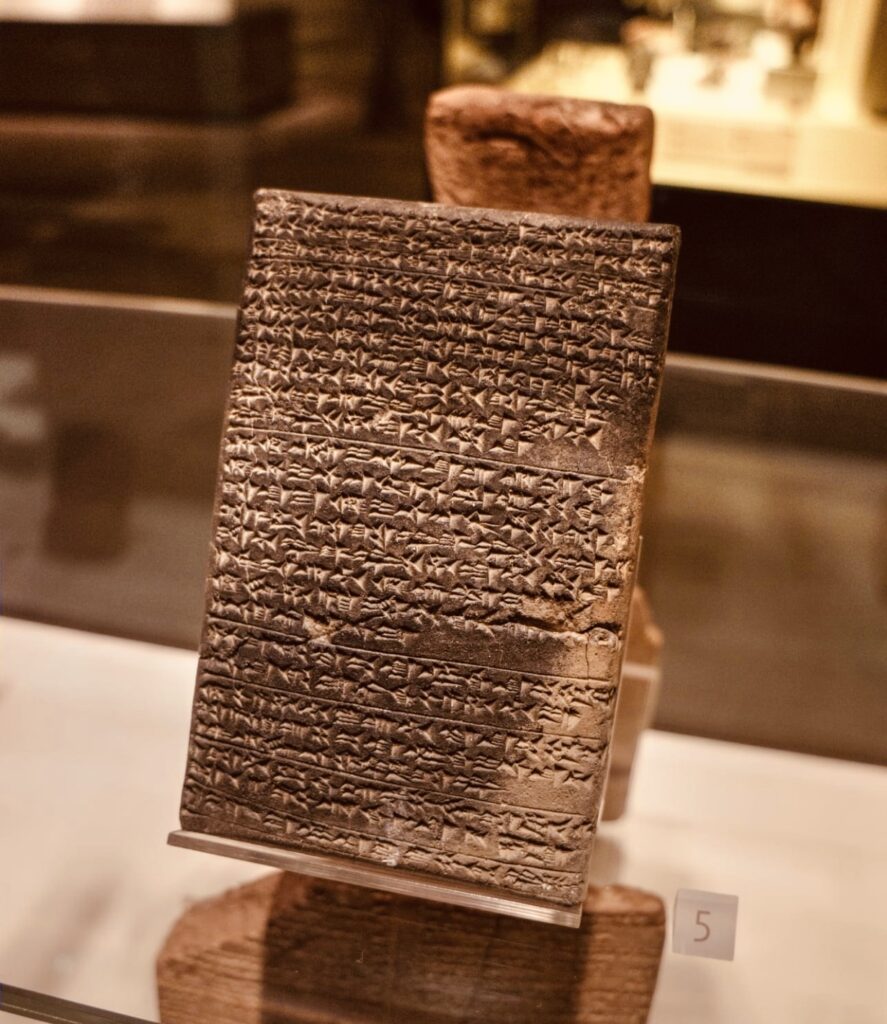
Images reproduced with the kind permission of Turkish Archeological News
LG/Turkey borders Georgia and many see this region as the birthplace of wine, is there a sense of this in Turkey?
Isa/Not many people know about Turkish wine and let’s face it when you think of Turkey wine is not the first things that comes to mind. That’s not going to change anytime soon or until I start making my own wine hehehe. Turkey is a big country and it is not homogenous. There are many different regions with different identities and there is usually some form of political upheaval. It is possible to experience many different Turkeys, the country is extremely diverse. There is a need for flexibility and understanding, it’s not like some countries you go and visit and you have a sense of the whole, it changes from city to city.
LG/I read that there are hundreds of indigenous grape varieties there.
Isa/There is this talk in Turkey, it’s a bit like the fisherman going to catch a fish and his fish is always the tallest, countries seem to always inflate their number of indigenous local varieties. I’ve heard numbers like 900 indigenous varieties and that may well be true, but I don’t think we utilise any more than 25, 30 of them in the actual wine making. Realistically there are probably eight or nine varieties that are commercially utilised to make wine and there may be another ten varieties that are just getting recognised and it will take some time for producers to figure out those varieties.
LG/Is Turkish wine more red than white?
Isa/There are more red varieties than white, and I think that’s something to do with the preference of the winemaking people there. Historically, most people thought the job of wine is to be red. I think that is changing, there are more white grapes coming through now. There are some with a wonderful acid line.
LG/Can you find old vines? Have terroirs been discovered and utilised?
Isa/There are old vines in Turkey. In terms of terroir – today there is a lot of information available to us about soil structure, weather conditions and patterns, climate conditions, there is a lot of knowledge that has been accumulating not just in Turkey but everywhere else that is useful for discovering the finest terroirs quickly. Historically grapes have always been grown in Turkey – there are some regions where grapes have been grown for the table and then there are other long-established areas where wine grapes are grown. With a little bit of extra scientific research into the soil structure you can actually minimise that inexperience in terroirs by looking at the right parameters.
In certain areas the climate is textbook Continental, there are also distinctive Mediterranean areas where its mild, all along the coastline from South to west and once you get to the Black Sea the climate becomes really similar to the UK which is not very nice.
Isa Tastes..
Oküzgözü – RED GRAPE VARIETY
Kayra Imperial Oküzgözü 2017 Elizig, Turkey
13.5% alcohol. Made by Daniel O’Donnel.
ISA/Oküzgözü means ox eye in Turkish. That is a reference to the large berries, the berries are very unlike most wine grapes because they are so large. The acidity level is usually good and depending on how its handled, it can bring forth bright red fruit such as pomegranate, berries, cherries as well as a hint of dried tomato, dried sage, herbs and spice. This wine is exceptional because it is a red wine that can take spice. Italian wines hate spice other than black pepper but this wine here can take paprika, it can take any sort of red chilli flakes, cumin, it just works so well with spices. This wine has American oak too which adds to the spice. The saying that the food and the wine of a region go together is absolutely correct. It just simply works and this is one of the very best wines in the world to go with lamb too. Fascinatingly the two varieties Oküzgözü and Bogazkere are perfect bedfellows for blending – they have the same level of compatibility as Cabernet and Merlot, the sum is better than the parts…there is a lovely tannic structure, beautiful acidity, incredible palate and a long finish.
This is costly for a Turkish wine. Daniel O’Donnel has been at the head of this project for many years and I don’t think there is another foreigner who understands Turkish wine better than he does.
JG/Some spicy oak on the nose with dusty blueberries and black cherries. Bold, rich palate with some vanilla and spicy cedar, as well as some blackcurrant. Very rich with the oak playing more than just a supporting role. Good balance on the fruit front, though: this will age further. 90/100
Bogazkere – RED GRAPE VARIETY
Likya Vineyards Bogazkere 2014 Antalya, Turkey
14% alcohol On the Trivet wine list this wine is £54.00.
Isa/The grape is Bogazkere, the G is silent so you pronounce everything else that you see. Originally this variety comes from north of Antalya. The grapes are grown at over 1000 m altitude, generally these grape varieties are well adapted to drought and altitude. This grape variety has the tannic structure that is similar to Xinomavro or Nebbiolo, its got quite a tannic structure. You know how birds are prone to eating grapes? Well not this one, this grape variety is not touched by birds because it’s so tannic. When it was first bottled it was quite unyielding but it started to change, it’s becoming more approachable. In the past if you had one sip of wine made from this variety your palate would just go (he makes a pinched cheek face to signify extreme tannic overload) and you cannot talk, but now with modern wine making they manage to learn how to manage these tannins and the wine is far better. It’s got a nice sort of development to it and there is a hint of reduction which adds complexity. There is this lovely dried fruit and dried, almost stewed meat quality (slightly bloody). This is one of the best wines you can drink with lamb. It’s a wine that is what it is, it doesn’t try to please people with its tannic structure, it’s a wine that needs a bit of understanding and also it’s a food wine, I would not serve this by itself.
JG/Supple and midweight with some dusty cherry notes as well as some crushed herbs, and dusty, spicy structure. Lovely red cherries and plums with a nice savoury dimension. Finishes dry with a hint of pepper, like a sweet Nebbiolo. 92/100
LG/Dried sour cherry, rose petals, garrigue and pot pourri. Intense/dried strawberries, salted Asian plums and a delicious drop of blood! Its powerful yet cherry red and clear – like Nebbiolo. 92
Sauvignon Blanc – TURKEY OFFERS INTERNATIONAL VARIETIES TOO
Chamlija Quartz Fumé Sauvignon Blanc 2019 Strandja Mountains, Thrace, Turkey
13% alcohol £46.00 TA price £64 in restaurant
ISA/Turkey does have some international varieties too, in a strange way Turkey does very well with some international varieties. In the modern era winemaking was reintroduced by foreigners so the winemakers had more information on international than indigenous. That is changing. If you compare this wine to some of the oak aged Sauvignon from the Loire or Bordeaux the style is quite similar. Vineyard are usually located around 350 metres of altitude on the foothills of the Strandja Mountains where there is a dramatic diurnal shift between day and night.
JG/Aromatic with grapefruit, smoke and some spice and appealing pear fruit. The palate is lively and textural with some citrus fruit and supporting nutty depth, with a touch of almond and smoky grapefruit. Classic and ageworthy with a nice acid line. 94/100
Ten Göynek – INDIGENOUS WHITE VARIETY
Chammlija Teraur Serisi Hüyük Baglari Ten Göynek 2020 Turkey
12% alcohol £63 TA £81 Eat in
ISA/This to me is like Assyrtiko, it has a wonderful acidity and mineral structure, there is that green fruit coming through and the acidity on this is just…2.95ph lip – smacking acidity. Its like chewing green almonds and incense.
NARINCE – INDIGENOUS WHITE GRAPE VARIETY
Kayra Narince 2020 Anatolia, Turkey
13% alcohol
ISA/Narince originates from the central plateau in Turkey, Tokat just to the South of the Black Sea, the Northern Anatolean Plateau if you like, its Central Anatolia, North Central Anatolia and this is a very important area for human civilisation dating back to the Bronze age – Hattusa is not very far from here and that was the capital of the Hittite Empire. The Hittites fostered an appreciation of wine and the quality of it. They understood the differences between the vineyards, the vintages and the years and also had a very strict code of who could drink whose wine. Everyone probably drank wine but if you were lowly you would get what you were given. Noble people and high priests got the best stuff and deviation was punishable by death.
LG/Was it democratic?
Isa/I think democracy is overrated personally, look where it got us here..
JG/ There’s a ginger cinnamon twist to the lively citrus fruit nose, with some minty notes. The palate is textural and minty with lovely layered citrus fruit showing some spicy botanic notes, including a twist of quinine and mint and rosemary. Stylish. 92/100
Arcadia Vineyards Odrysia Narince 2019 Kirklareli, Turkey
14% alcohol
ISA/There are wonderful notes of pear, melon and pear, stone fruit and quince, sweet floral notes. On the palate it has a lovely freshness and there is a dried tomato phenolic bitterness that makes it quite enjoyable actually. This is made from the highest quality white grape in Turkey.
JG/ Spicy pear and citrus on the nose with some dried herbs. Layered palate has a touch of tinned peach as well as lime and grapefruit. Has a lovely fruit emphasis with nice texture. 92/100
LG/ Powerfully pear scented, pear on the palate too with watery honeydew melon, saline, candied lemon, a touch of grapefruit – sweet floral notes – dried camomile and a mineral note with a decent acid line plus a herbal greenness. 93
